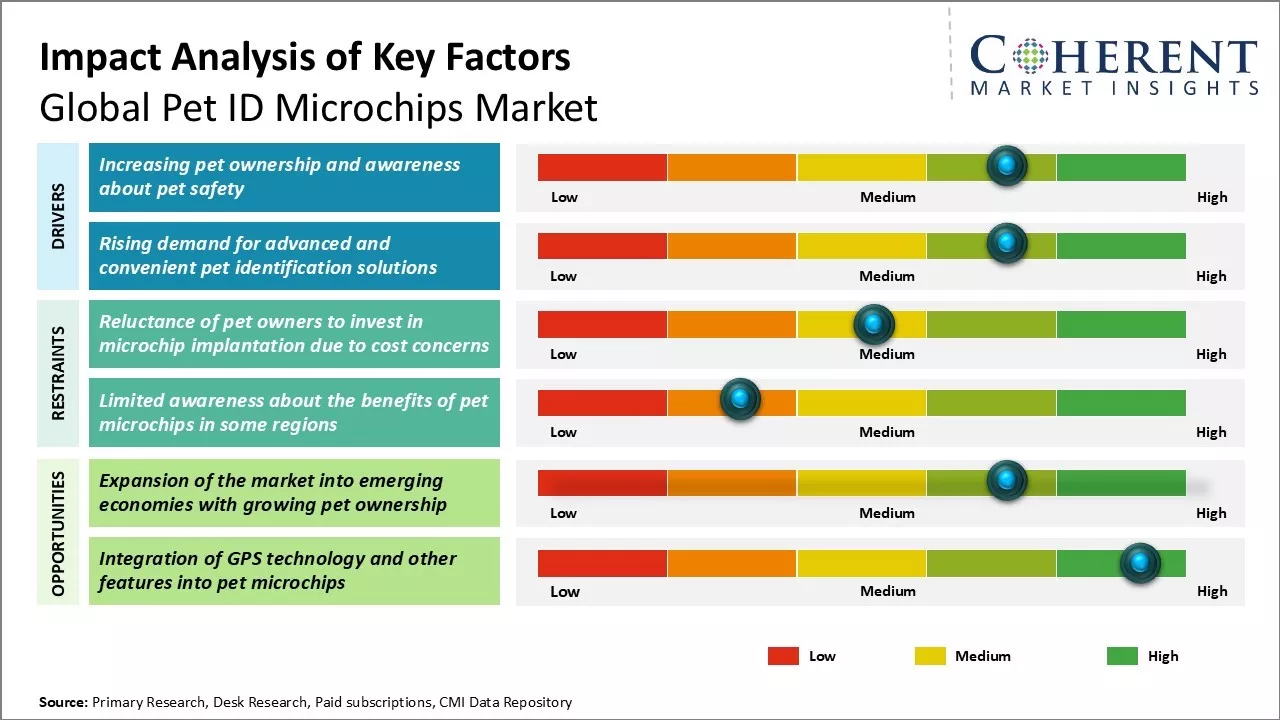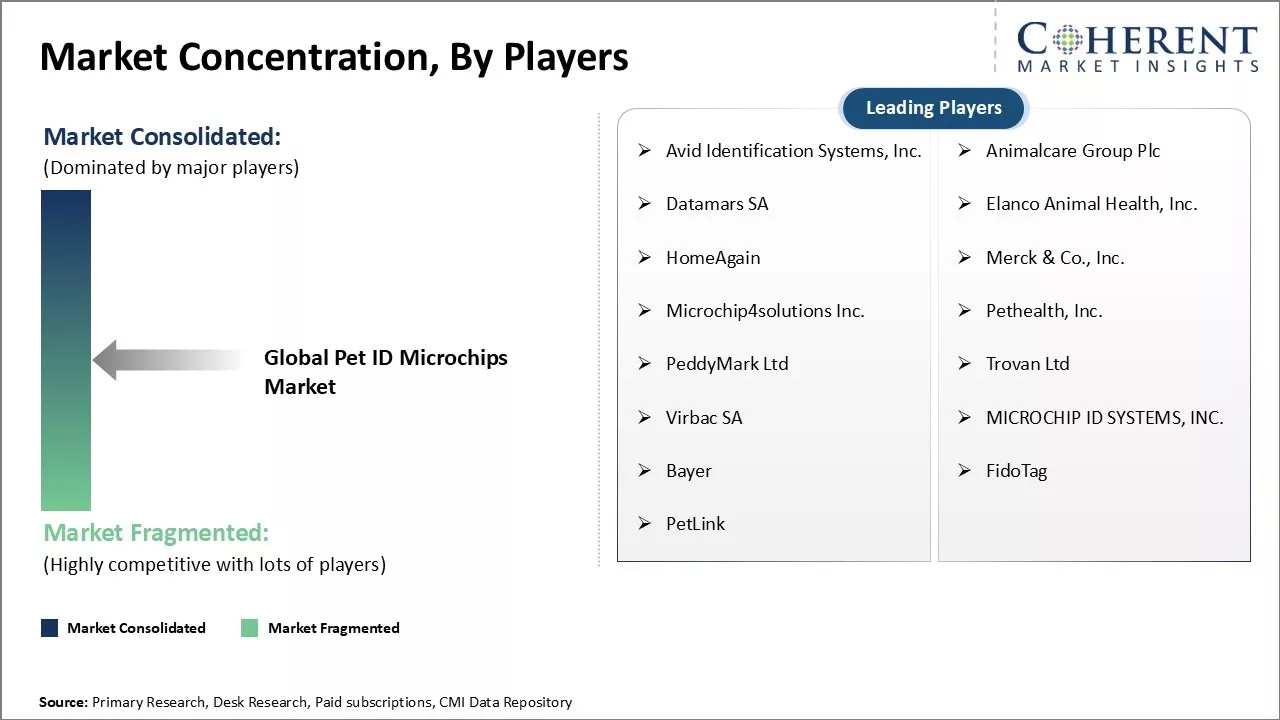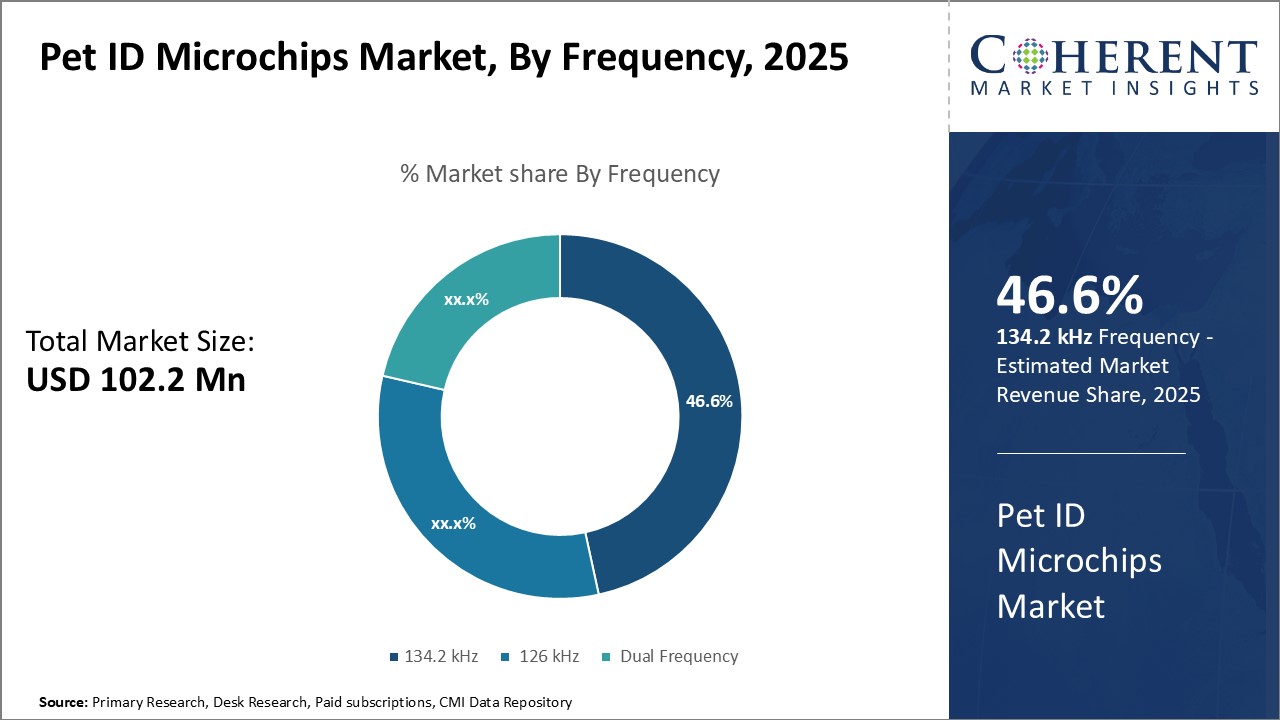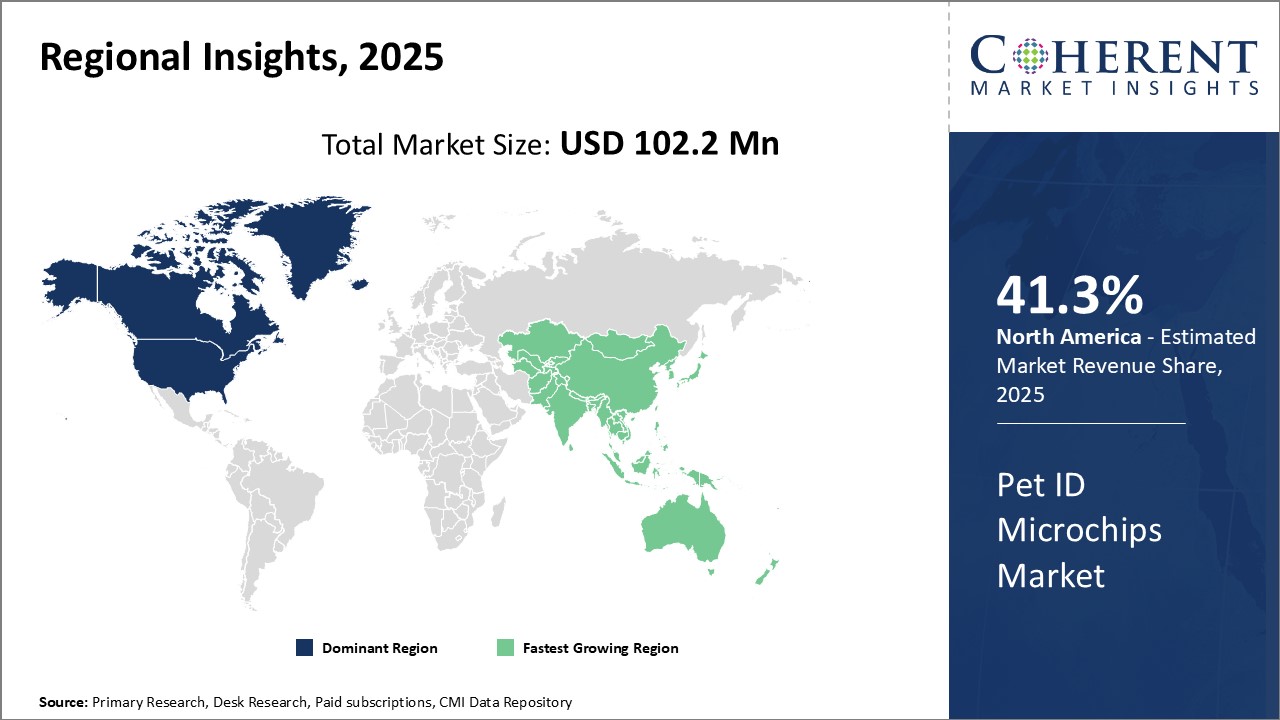Global Pet ID Microchips Market is estimated to be valued at USD 102.2 Mn in 2025 and is expected to reach USD 153.8 Mn by 2032, exhibiting a compound annual growth rate (CAGR) of 6.0% from 2025 to 2032.

Discover market dynamics shaping the industry: Request sample copy
Protecting pets from theft has been a concerning issue for many pet owners globally. Microchipping provides safety and enables quick identification if a pet gets lost. This technology is gaining wider acceptance owing to initiatives by various animal welfare organizations to promote its adoption.
Increasing pet ownership and awareness about pet safety
With rising incomes and changing lifestyles, pet ownership has significantly grown across the world in recent years. More people are adopting pets, especially dogs and cats, as companions. Pets are considered integral members of families by millions of households globally. This surge in pet population has also raised awareness about pet safety and welfare.
People want to ensure their pet companions stay safe and do not get lost. In case a pet escapes accidentally from home or during travel, identifying and reuniting it with the owner becomes very important. Microchipping provides a permanent method of pet identification by implanting a chip under the skin that contains a unique identification number. This number when scanned helps trace the pet back to its registered owner's name and contact details stored in a database. Microchipping has gained acceptance as a reliable way of protecting pets.
In developed markets like North America and Western Europe, microchipping laws have been mandated by several local and state authorities for dogs. Non-profit organizations too run campaigns stressing on the importance of microchipping. They point out how microchips have helped thousands of lost pets get back home as the stored information could identify the owner.
Even in developing regions, though mandatory laws may still be lacking, pet lovers are becoming increasingly aware about microchips as a safety feature through social media and online communities. Rescue shelters and NGOs promote microchipping of stray animals to help them find new caring homes. Overall, the growth in the number of pet guardians and their emphasis on pet wellbeing and identification are key drivers propelling the pet microchips industry worldwide. As responsible pet ownership expands globally, deployment of microchips as a valuable identification tool will keep progressing in the following years.

Get actionable strategies to beat competition: Request sample copy
Rising Demand for Advanced and Convenient Pet Identification Solutions
As human-pet bonding strengthens, pet owners also seek advanced solutions that can more smartly monitor and aid in their care. Traditional collar tags and ID plates can fall off or fade away with time. Also, tags do not store any retrievable identity records online. This led to the development of next generation RFID microchips providing improved functionalities. The newest microchips feature increased memory capacity and compatibility with advanced reading systems. They allow storing of not just the pet's name and owner's details but additional information like vaccination records, medications, and health conditions can be stored and updated regularly.
The enhanced microchips can be paired with user-friendly smartphone apps through Bluetooth connectivity. Owners can scan the chip using their phone to access the complete identity and medical profile digitally. Such technological integrations empower pet owners with real-time access to their pets' identities and wellness status anywhere, anytime. In case pet gets astray, instant access to historic health and nutritional records assists rescuers in providing urgent care. The convergence of microchips with virtual platforms like apps and cloud services is a major value addition according to pet owners today.
Furthermore, sophisticated handheld RFID readers compatible with new microchips have made the identification process seamless and convenient. Powerful readers can scan chips quite quickly even from a distance without having to manually restrain pets. Advanced ID solutions are satisfying the growing demand for contactless, on-the-go identification among busy pet guardians and caregivers. Their superior features and compatibility with smart monitoring and management systems will maintain strong interest among both existing and new adopters of pets in the foreseeable future.
For instance, In December 2023, Merck Animal Health, a division of Merck & Co., Inc. focused on innovative solutions for animal health, made notable advancements in the pet microchip sector with the introduction of the Home Again Microchip. Home Again is a recognized brand that offers pet microchipping solutions designed for identification and recovery. This microchip is commonly used by veterinarians and pet owners to facilitate the reunion of lost pets with their families through a centralized pet recovery database.
Key Takeaways from Analyst:
The global pet ID microchips market growth is driven by rising pet adoption and stringent regulations related to pet identification in many countries. Growing awareness about pet ID microchips among pet owners and emphasis on responsible pet ownership will support the demand. North America currently dominates the market due to high acceptance of pets and regulations mandating pet microchipping in several states. Europe is also a major region benefitting from rising pet ownership and availability of specialty vet clinics for microchipping.
However, high equipment costs and lack of regulations in developing countries could hamper the market growth. Moreover, religious and cultural barriers against dog ownership in some Asian and Middle Eastern nations pose a challenge. On the positive side, growing millennial pet ownership in Asia and Latin America presents significant opportunities. Reducing microchip prices through advanced technologies will further aid adoption. The market also benefits from partnerships between manufacturers and veterinarians for installation and registration services.
Overall, stringent legislation, increasing animal welfare programs by non-profits, and rising discretionary spending on pets are conducive to market expansion. The market players must focus on education campaigns about microchips to gain consumer confidence.
Market Challenges: Reluctance of pet owners to invest in microchip implantation due to cost concerns
One of the major challenges faced in the global pet ID microchips market is the reluctance of many pet owners to invest in microchip implantation for their pets due to cost concerns. While microchipping helps in easy identification of lost pets and also provides safety benefits, many pet owners find the procedure of implantation too costly. The cost of microchipping ranges from US$ 15 to US$ 50 per pet depending on factors such as species and provider. This price point acts as a deterrent for owners of low- or moderate-income groups to get their pets microchipped. This can significantly limit the potential for higher penetration rates of pet microchips across regions. The market players need to focus on affordable microchip options as well as create more awareness about the longer-term benefits and cost effectiveness of microchipping through educational programs and campaigns. The government bodies can also provide some subsidies to promote widespread adoption of this identification technology for pets.
Market Opportunities: Expansion of the market into emerging economies with growing pet ownership
The global pet ID microchips market has huge scope for expansion into emerging economies which are witnessing rapid growth in pet ownership. Countries across Latin America, Asia Pacific, and Africa are seeing a rise in disposable incomes and changing lifestyles which are driving more people to own pets such as dogs and cats as companions. These emerging nations currently have very low penetration of microchipping for pets due to lack of awareness and high initial costs involved. However, as the pet population in these regions balloons, there will be a latent demand emerging for reliable pet identification solutions. Market players need to devise innovative low-cost models and implement grassroots awareness programs in the developing markets to tap into these untapped growth opportunities. If microchipping providers are able to make suitable inroads, it will open up a vast new customer base and potential revenues over the coming years.

Discover high revenue pocket segments and roadmap to it: Request sample copy
Insights By Frequency - Convenience of Standard drives 134.2 kHz Adoption
In terms of Frequency, the 134.2 kHz segment is estimated to hold 46.6% share of the market in 2025 owing to its adoption as an international standard. As the most widely accepted frequency, 134.2 kHz allows for universal compatibility which encourages veterinarians, retailers, and owners to utilize this standard for simplicity. Compatibility across borders streamlines the identification of lost pets and their easy reunification with owners. The plug-and-play capability of 134.2 kHz microchips boosts their appeal over other frequencies requiring country-specific equipment for scanning.
Insights By Application - Pet Identification drives Pet Ownership
In terms of Application, the Pet Identification segment is estimated to hold 39.9% share in 2025 due to microchips aiding permanent identification. With microchips providing lifelong ID, owners gain peace of mind knowing their pets can be identified even without collars or tags in cases such as accidents. This reassurance encourages pet adoption and retention of ownership. Microchips also support lost pet recovery centers by maintaining accurate owner records. The ability to swiftly reunite pets with their families through microchips breeds loyalty to this application among owners.
Insights by Distribution Channel - Expert Guidance in the Veterinary Clinics Segment Increases Clinic Visits
In terms of Distribution Channel, the Veterinary Clinics segment is estimated to hold 49.1% share in 2025 owing to reliable guidance available. Compared to other channels, clinics enable guidance from trained veterinary professionals on benefits, implant procedure and lifetime pet wellness. This expertise reassures owners and increases clinic footfall for microchipping. Additionally, bundling microchipping services with regular wellness visits at clinics strengthens owner-vet relationships and makes ongoing care more convenient over the pet's lifetime.

Need a Different Region or Segment? Customize now
North America has dominated the global pet ID microchips market with an estimated 41.3% share in 2025. The region has a highly developed pet healthcare industry with high owner expenditure on pet care. Many countries in North America have laws that either mandate or encourage pet identification through microchipping. This has ensured widespread adoption of microchips among pet owners in the region.
The presence of industry giants like AVID Identification Systems and Home Again bolsters the North American microchipping industry. These companies invest heavily in research and development to introduce new and enhanced microchips. They also spend substantially on marketing their products, educating pet owners and veterinarians about benefits of identification. This has further augmented microchip usage over the years. In addition, the pricing of pet microchips is most competitive in North America due to intense competition among manufacturers. This makes microchipping affordable for majority of pet owners.
Among regions, Asia Pacific is poised to grow the fastest in the global pet ID microchips market over the coming years. Pet ownership is escalating in the Asian middle class with rising incomes and changing lifestyles. Many Asian nations like China and India now have a substantial population of companion animals. At the same time, awareness about pet identification through microchips is widening due to the influx of international pet service brands. The microchipping industry stands to benefit from these favourable trends. Also, several Asian governments have shown inclination towards mandating permanent pet ID in response to rising concerns over owner accountability and animal welfare.
Pet ID Microchips Market Report Coverage
| Report Coverage | Details | ||
|---|---|---|---|
| Base Year: | 2024 | Market Size in 2025: | USD 102.2 Mn |
| Historical Data for: | 2020 To 2024 | Forecast Period: | 2025 To 2032 |
| Forecast Period 2025 to 2032 CAGR: | 6.0% | 2032 Value Projection: | USD 153.8 Mn |
| Geographies covered: |
|
||
| Segments covered: |
|
||
| Companies covered: |
Avid Identification Systems, Inc., Animalcare Group Plc, Datamars SA, Elanco Animal Health, Inc., HomeAgain, Merck & Co., Inc., Microchip4solutions Inc., Pethealth, Inc., PeddyMark Ltd, Trovan Ltd, Virbac SA, MICROCHIP ID SYSTEMS, INC., Bayer, FidoTag, and PetLink |
||
| Growth Drivers: |
|
||
| Restraints & Challenges: |
|
||
Uncover macros and micros vetted on 75+ parameters: Get instant access to report
*Definition: The Global Pet ID Microchips Market provides microchips that can be implanted under the skin of pet animals like dogs and cats for identification purposes. These microchips are about the size of a grain of rice and contain a unique identification number that vets and animal shelters can scan to retrieve key owner contact details in case the pet gets lost. The microchips help reunite lost pets with their owners quickly and easily.
Share
Share
About Author
As an accomplished Senior Consultant with 7+ years of experience, Pooja Tayade has a proven track record in devising and implementing data and strategy consulting across various industries. She specializes in market research, competitive analysis, primary insights, and market estimation. She excels in strategic advisory, delivering data-driven insights to help clients navigate market complexities, optimize entry strategies, and achieve sustainable growth.
Missing comfort of reading report in your local language? Find your preferred language :
Transform your Strategy with Exclusive Trending Reports :
Frequently Asked Questions
Joining thousands of companies around the world committed to making the Excellent Business Solutions.
View All Our Clients
US Reciprocal Tax Impact Analysis On Pet ID Microchips Market
Stay updated on tariff changes with expert insights and timely information